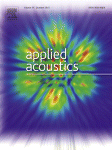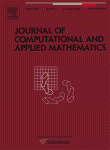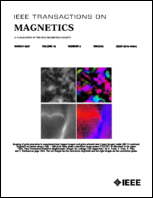Simulation and differential equations
 Describes an indoor acoustics simulator that can deal with
high bandwidth ultrasonic signals and the multiple reflections
due to the room walls and the objects inside it. It also
accounts fo the transducer's beam patterns and the ultrasonic
wave propagation losses. The simulator can also be used to
simulate the Doppler effect for any type of movement of the
receiver. The simulator was implemented using Matlab and is
freely available. Field tests have confirmed its accuracy,
turning it into a valuable tool to study and compare different
ultrasonic pulses or ultrasonic location systems under
controlled conditions.
Describes an indoor acoustics simulator that can deal with
high bandwidth ultrasonic signals and the multiple reflections
due to the room walls and the objects inside it. It also
accounts fo the transducer's beam patterns and the ultrasonic
wave propagation losses. The simulator can also be used to
simulate the Doppler effect for any type of movement of the
receiver. The simulator was implemented using Matlab and is
freely available. Field tests have confirmed its accuracy,
turning it into a valuable tool to study and compare different
ultrasonic pulses or ultrasonic location systems under
controlled conditions.
 The idea behind the Sparse Point Representation (SPR)
method is to retain the function data indicated by significant
interpolatory wavelet coefficients, which are defined as
interpolation errors in reference to an interpolating
subdivision scheme. Typically, a SPR grid is coarse in smooth
regions, and refined close to irregularities. Furthermore, the
computation of partial derivatives of a function from the
information of its SPR content is performed in two steps. The
first one is a refinement procedure to extend the SPR by the
inclusion of new interpolated point values in a security zone.
Then, for points in the refined grid, such derivatives are
approximated by uniform finite differences, using a step size
proportional to each point local scale. If required neighboring
stencils are not present in the grid, the corresponding missing
point values are approximated from coarser scales using the
interpolating subdivision scheme. Using the cubic interpolation
subdivision scheme, we demonstrate that such adaptive finite
differences can be formulated in terms of a collocation scheme
based on the wavelet expansion associated to the SPR. For this
purpose, we prove some results concerning the local behavior of
such wavelet reconstruction operators, which stand for SPR
grids having appropriate structures. This statement implies
that the adaptive finite difference scheme and the one using
the step size of the finest level produce the same result at
SPR grid points. Consequently, in addition to the refinement
strategy, our analysis indicates that some care must be taken
concerning the grid structure, in order to keep the truncation
error under a certain accuracy limit. Numerical examples based
on 2D Maxwell equations are given.
The idea behind the Sparse Point Representation (SPR)
method is to retain the function data indicated by significant
interpolatory wavelet coefficients, which are defined as
interpolation errors in reference to an interpolating
subdivision scheme. Typically, a SPR grid is coarse in smooth
regions, and refined close to irregularities. Furthermore, the
computation of partial derivatives of a function from the
information of its SPR content is performed in two steps. The
first one is a refinement procedure to extend the SPR by the
inclusion of new interpolated point values in a security zone.
Then, for points in the refined grid, such derivatives are
approximated by uniform finite differences, using a step size
proportional to each point local scale. If required neighboring
stencils are not present in the grid, the corresponding missing
point values are approximated from coarser scales using the
interpolating subdivision scheme. Using the cubic interpolation
subdivision scheme, we demonstrate that such adaptive finite
differences can be formulated in terms of a collocation scheme
based on the wavelet expansion associated to the SPR. For this
purpose, we prove some results concerning the local behavior of
such wavelet reconstruction operators, which stand for SPR
grids having appropriate structures. This statement implies
that the adaptive finite difference scheme and the one using
the step size of the finest level produce the same result at
SPR grid points. Consequently, in addition to the refinement
strategy, our analysis indicates that some care must be taken
concerning the grid structure, in order to keep the truncation
error under a certain accuracy limit. Numerical examples based
on 2D Maxwell equations are given.
 This paper discusses the use of sparse point
representations (SPR) in computational eletromagnetics. The
idea is to represent the solution using only those samples that
correspond to significant wavelet coefficients. The paper
studies staggered and non-staggered grids for the
discretization of the magnetic and electrical fields. Both lead
to sparse grids that adapt in space to the local smoothness of
the fields, and, at the same time, track the evolution of the
fields over time. The conclusion is that schemes based on
staggered grids lead to better numerical dispersion, specially
for low order schemes and coarse grids; however, for a given
accuracy, the adaptive, non-staggered grid scheme requires less
computational effort, and its dispersion characteristics can be
controlled by varying the order and the grid density. The SPR
method combined with non-staggered grids therefore seems to
have a good potential in computational electromagnetics.
This paper discusses the use of sparse point
representations (SPR) in computational eletromagnetics. The
idea is to represent the solution using only those samples that
correspond to significant wavelet coefficients. The paper
studies staggered and non-staggered grids for the
discretization of the magnetic and electrical fields. Both lead
to sparse grids that adapt in space to the local smoothness of
the fields, and, at the same time, track the evolution of the
fields over time. The conclusion is that schemes based on
staggered grids lead to better numerical dispersion, specially
for low order schemes and coarse grids; however, for a given
accuracy, the adaptive, non-staggered grid scheme requires less
computational effort, and its dispersion characteristics can be
controlled by varying the order and the grid density. The SPR
method combined with non-staggered grids therefore seems to
have a good potential in computational electromagnetics.